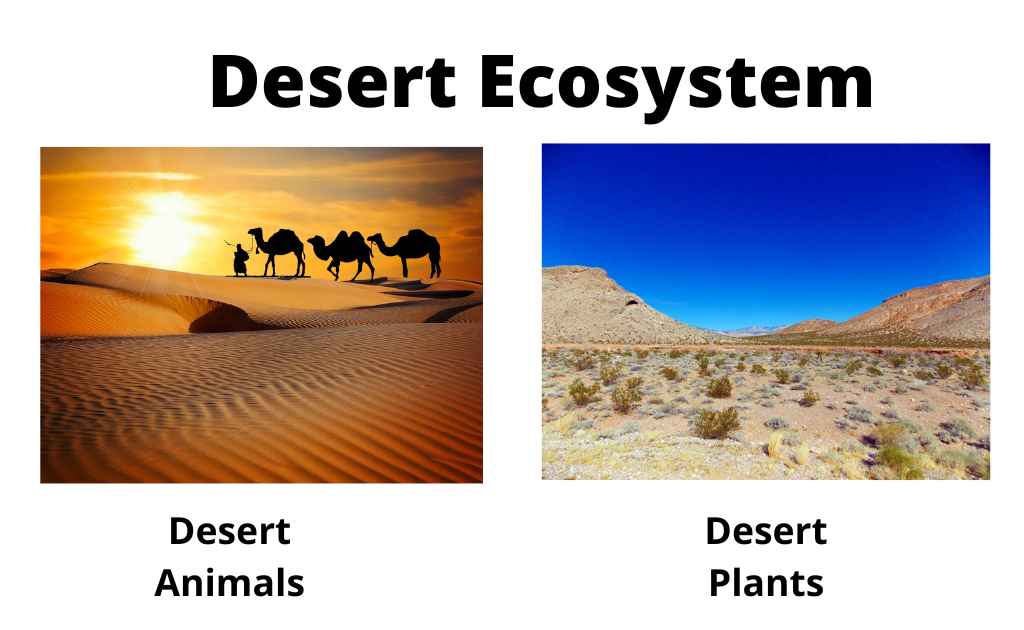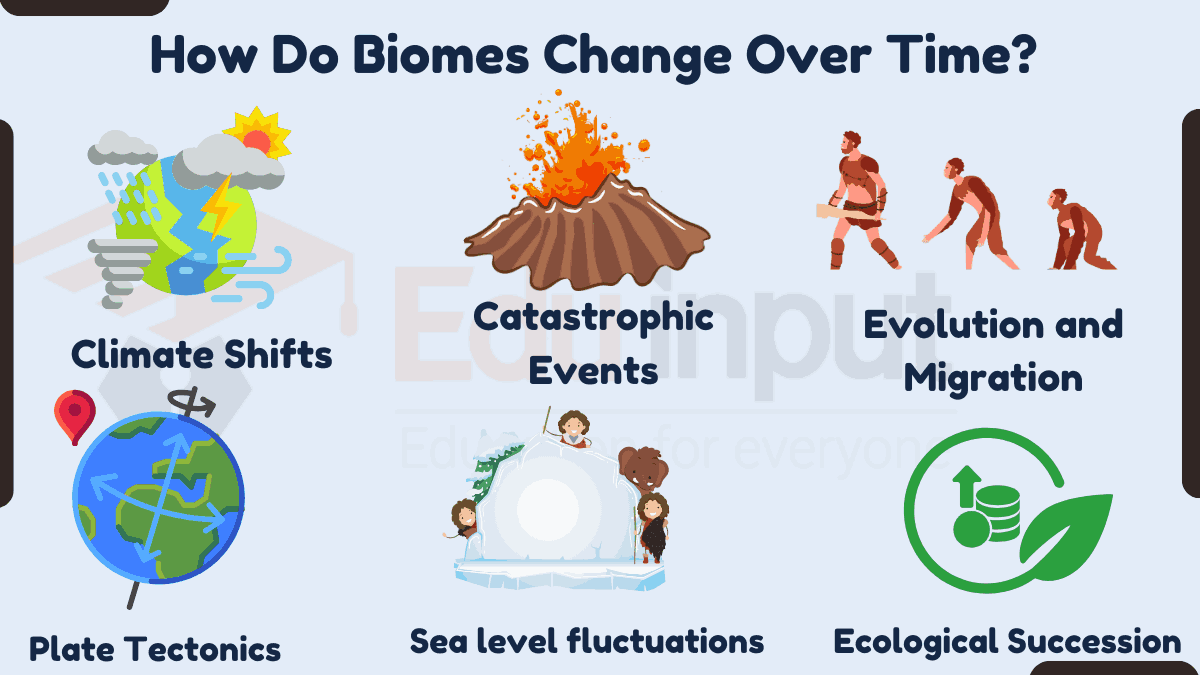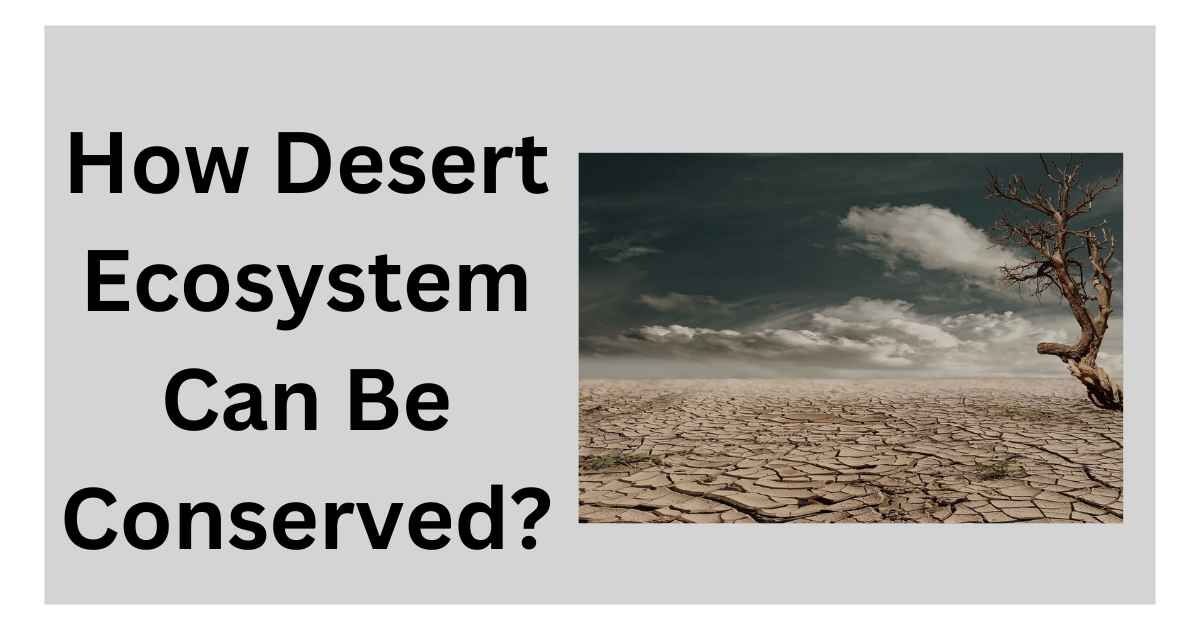Desert Ecosystem-Characteristics, Composition, and Types
Deserts are some of the driest ecosystems on Earth. They have been described as being “the least hospitable environment” due to their extreme dryness. These environments are characterized by low rainfall, high temperatures, and little vegetation.
There are many different types of deserts, including arid deserts, semi-arid deserts, hyper-arid deserts, steppe deserts, and salt deserts.
In a desert ecosystem, the food chain shows the transfer of energy and nutrients through different trophic levels, from primary producers like plants and cacti to herbivores, carnivores, and decomposers.
Desert animals include camels, coyotes, roadrunners, fennec foxes, and scorpions, all adapted to survive in arid environments.
What is Desert Ecosystem?
The driest ecosystem with less than 30cm (10 inches) of annual rain is called a desert. Common deserts have widely spaced vegetation. They have a large area of bare ground.
Deserts are prime examples of natural ecosystems, characterized by their unique and harsh environmental conditions, such as low precipitation, high temperatures, and sparse vegetation, which have shaped the distinctive adaptations and biodiversity found within these barren landscapes.

What are Key Characteristics of Desert Ecosystem?
A desert ecosystem is an ecosystem that is characterized by its extreme aridity, sparse vegetation, and harsh living conditions. It has following particular characteristics:
Low rainfall
Deserts are known for their low levels of rainfall. In fact, some deserts receive less than 25 mm of rain per year, making them one of the driest places on Earth.
Extreme temperatures
The temperature in deserts can vary greatly between day and night, with daytime temperatures often exceeding 40°C and dropping to below freezing at night.
Sparse vegetation
Due to the lack of rainfall and extreme temperatures, vegetation in deserts is often limited to plants that are adapted to survive in these conditions, such as cacti and succulents.
Adapted wildlife
Desert animals have evolved special adaptations to help them survive in this harsh environment. Some examples include the ability to store water, camouflage, and burrow underground to avoid the heat.
Structure and Function of Desert Ecosystem
The structure and function of a desert ecosystem are shaped by the extreme aridity and harsh living conditions of this environment. Here are some key components of a desert ecosystem and their functions:
Producers in the desert ecosystem
The main producers in desert ecosystems are plants such as cacti and succulents. These plants have adapted to the lack of water by storing water in their tissues or having long roots that can reach underground water sources.
Consumers in desert ecosystem
Desert ecosystems have a variety of consumers, including herbivores such as rodents and reptiles, as well as carnivores such as snakes and birds of prey. These animals have adapted to the harsh conditions of the desert by being able to survive on limited resources, such as water and food.
Decomposers in desert ecosystem
Decomposers are important in any ecosystem, including deserts. In the desert, decomposers break down dead plant and animal matter, releasing nutrients back into the soil for use by plants and other organisms.
Abiotic factors in desert ecosystem
Abiotic factors, such as temperature, water availability, and soil type, play an important role in shaping the structure and function of desert ecosystems. For example, the lack of water in the desert limits the growth of plants and the availability of food for animals.
What are Types of Desert Ecosystem?
There are different types of desert ecosystems:
Hot and dry deserts
These deserts are the most well-known type, and they are characterized by high temperatures and very low rainfall. The Sahara Desert in Africa and the Mojave Desert in North America are examples of hot and dry deserts.
Semi-arid deserts
These deserts receive slightly more rainfall than hot and dry deserts, but still have long periods of drought. The Chihuahuan Desert in North America and the Great Victoria Desert in Australia are examples of semi-arid deserts.
Coastal deserts
These deserts are found along the coastlines of continents, where cool ocean currents create dry conditions. The Namib Desert in Africa and the Atacama Desert in South America are examples of coastal deserts.
Cold deserts
These deserts are characterized by cold temperatures and low precipitation. They are typically found at high elevations or in polar regions. The Gobi Desert in Asia and the Great Basin Desert in North America are examples of cold deserts.
Polar deserts
These deserts are found in the polar regions, where the extremely cold temperatures limit plant growth. The Antarctic and Arctic deserts are examples of polar deserts.

Adaptation in Organisms of Desert Ecosystem
Desert ecosystems present extreme challenges for survival, including intense heat, scarce water, and limited resources. Over time, both plants and animals have developed remarkable adaptations to survive in these harsh conditions.
Adaptations in desert plants include waterproof waxy coatings to prevent water loss and thick, fleshy stems to store water during dry periods. Some plants reduce leaf size or become leafless to minimize water loss. Adaptations in desert animals are equally diverse. Many animals are nocturnal, living in cool burrows during the day to avoid intense heat. Smaller animals often survive without drinking water, and obtaining moisture from their food, while larger animals like camels can withstand long periods without water.
Location In World
These biomes are found on every continent. These are present around 20° to 30° north and south latitudes. Deserts are also found in the rain shadows of major mountain ranges. Desert has a variety of environments. The extreme form of desert is Sahara or Chile. There is no rain in these deserts. So there is no vegetation in these deserts.
Rainfall: Less than 25 to 50 cm (10-20 inches) or not at all.
Plant life: The plants are planted by hand. So the plants are often evenly spaced (The perennial plants are bushes or cacti). These plants have large shallow root systems.
Threats to Desert Ecosystem
The desert ecosystem faces various threats that are disturbing its balance. Here are some factors that desert ecosystems have to face:
- Climate change
- habitat destruction
- invasive species
- water scarcity
- Overgrazing
- Improper management of water






Leave a Reply